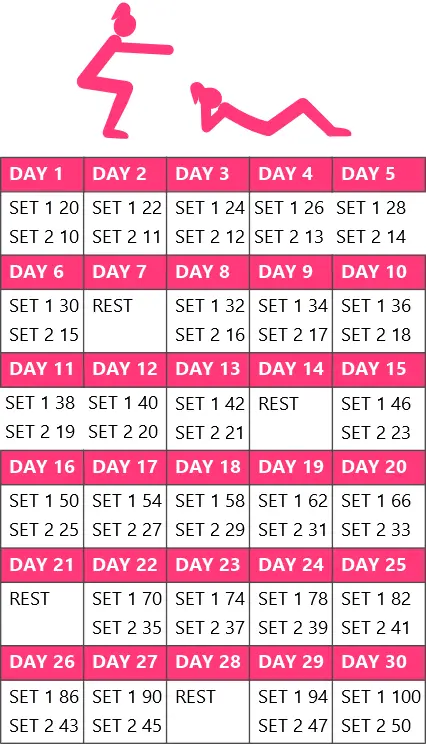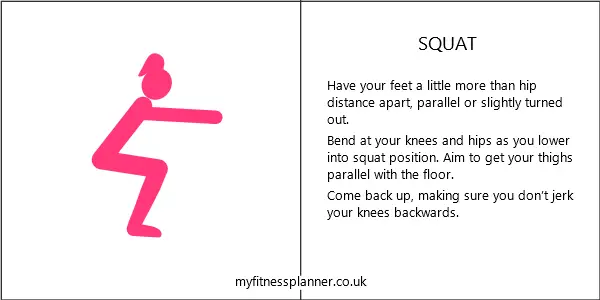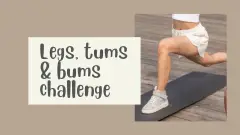Start with 30 and get up to 150 squats and 150 crunches by day 30 of this squat and crunch challenge.
Intensity level: intermediate
Benefits: the squats work all the leg muscles and the crunches work the “6-pack” abdominal muscles
Safety: please read the general safety information here
What you need: an exercise mat or some other form of cushioning for your spine. See an exercise mat buying guide here.
Squat and crunch challenge chart
There are 2 sets of the exercises each day. In the second set, you do half the number of reps that you did in the first. So on day 1 for example, do 20 reps of each exercise, then d0 10 reps of each. The chart shows the reps for each exercise every day and instructions for the exercises are below the chart.

Challenge exercises


Muscles activated during squats
Squats are a compound exercise that works multiple muscle groups in the lower body. The primary muscles activated during squats include:
- Quadriceps: The quadriceps are the large muscles at the front of the thighs. They are responsible for extending the knees.
- Hamstrings: The hamstrings are the muscles at the back of the thighs. They are responsible for flexing the knees and extending the hips.
- Gluteus maximus: The gluteus maximus is the large muscle at the back of the buttocks. It is responsible for extending the hips and rotating them externally.
Squats also activate other muscles in the lower body, including the calves, adductors, and abductors. In addition, squats activate muscles in the core, such as the rectus abdominis, obliques, and transverse abdominis. These muscles help to stabilize the spine and trunk during the squat movement.
The specific muscles that are activated during a squat will vary depending on the depth of the squat and the width of the stance. For example, a deeper squat will activate the quadriceps more than the hamstrings, while a wider stance will activate the adductors and abductors more than a narrower stance.

